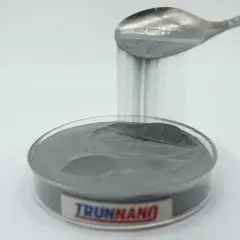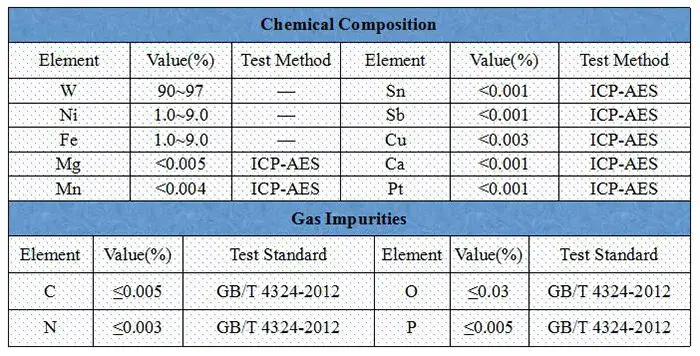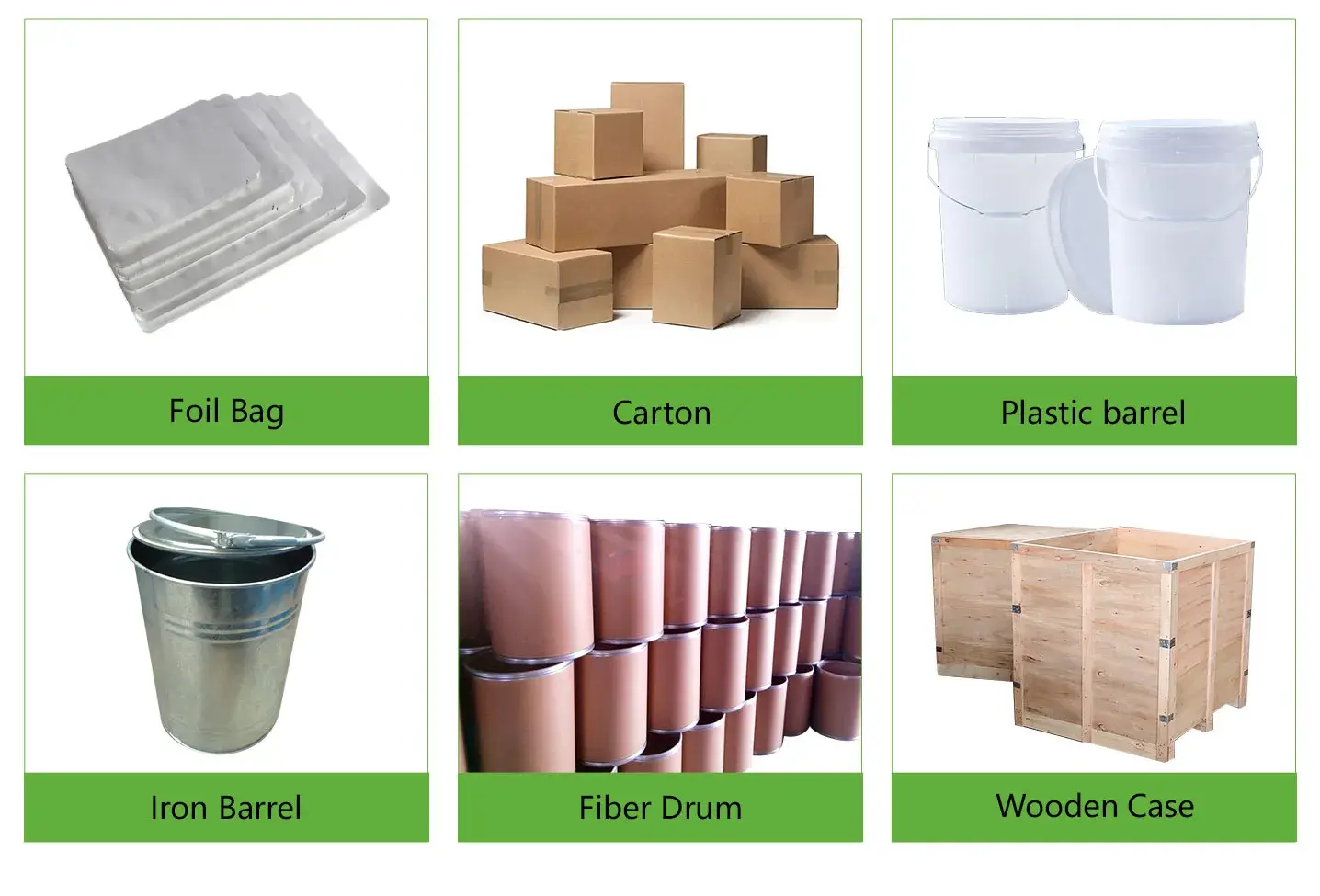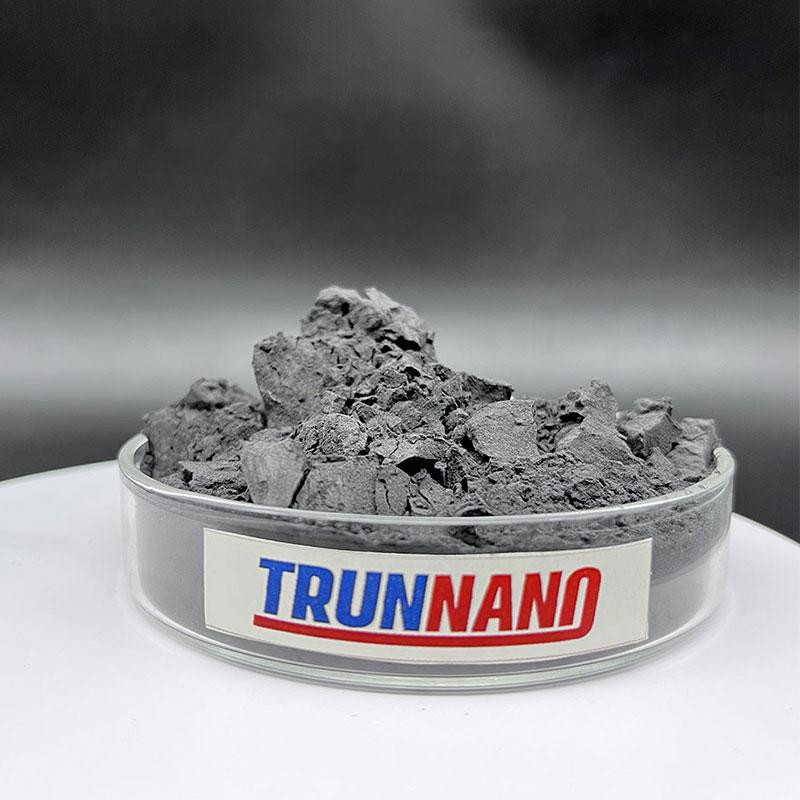About 3D Printing Alloy Spherical Tungsten Nickel Iron Alloy Powder:
Tungsten-nickel-iron alloy is an alloy based on tungsten (about 90-98%) and adding nickel, iron, copper or other components, and its specific gravity is generally 17.0-18.5.
Product name: Spherical Tungsten Nickel Iron Alloy Powder
Product Specifications: 15-45μm, 15-53μm, 45-75μm, 45-105μm, 75-150μm. (Can be customized according to customer requirements)
Powder characteristics: High purity (≥99.9%), low oxygen (≤300ppm), high sphericity (≥98%), smooth surface, no satellite ball, full density inside the particle, no hollow powder and uniform particle size distribution, with excellent flow performance (≤8.0s/50g) and high loose density (≥8.5g/cm3) and vibration density (≥9.5g/cm3).
Applicable technology: Laser/electron beam additive manufacturing (SLM/EBM), laser direct deposition (DLD), hot isostatic powder molding (HIP), metal injection molding (MIM), powder metallurgy (PM), laser deposition (LC) and other processes.

3D Printing Alloy Spherical Tungsten Nickel Iron Alloy Powder
How to produce spherical tungsten nickel iron alloy powder?
Spherical tungsten-nickel-iron alloy powder can be produced by a variety of methods, and the common ones are mechanical alloying method, sol-gel method, high-temperature reduction method, and so on.
The mechanical alloying method is prepared by mixing, crushing, and sintering tungsten, nickel, iron, and other raw materials in a series of processes through a high-energy ball mill. The powder particles prepared by this method are uniform in shape, narrow in size distribution, and smooth in surface, with high specific surface area and activity, which are suitable for preparing high-performance catalysts and electrode materials.
The sol-gel method is to take metal salt as raw material, prepare the precursor of metal oxides through chemical reaction, and then reduce the precursor at high temperature to get metal monomers. The tungsten-nickel-iron alloy powder prepared by this method is uniform in size and narrow in particle size distribution, but the production cost is higher.
The high-temperature reduction method reduces metal oxides or sulfides at high temperatures to get metal monomers. The tungsten-nickel-iron alloy powder prepared by this method has high purity and low impurity content, but the production process needs to consume a lot of energy and time.
What is the application of spherical tungsten nickel iron alloy powder?
Spherical tungsten-nickel-iron alloy powder is widely used in aerospace, aviation, navigation, military, national defense, automotive, chemical industry, and other fields.
In the electronics industry, spherical tungsten-nickel-iron alloy powder has good electrical conductivity and thermal stability and is often used to prepare electrical contact materials for electronic devices. As a raw material for electrical contact materials, it can provide good electrical conductivity and stability, which makes electronic devices have better performance.
In addition, spherical tungsten-nickel-iron alloy powder plays an important role in preparing metal-ceramic materials. Metal-ceramic material is a composite material composed of metal and ceramic phases, which has the toughness of metal and the hardness of ceramic. Spherical tungsten-nickel-iron alloy powder, as a raw material for metal-ceramic materials, can provide a good combination between the metal phase and the ceramic phase, which makes the metal-ceramic materials have better mechanical properties and wear-resistant properties.
Composition (percentage by mass) of Tungsten Nickel Iron Alloy powder:

Composition (percentage by mass) of Tungsten Nickel Iron Alloy powder
Storage Condition of Spherical Tungsten Nickel Iron Alloy Powder:
Damp reunion will affect Spherical Tungsten Nickel Iron Alloy powder dispersion performance and using effects, therefore,Spherical Tungsten Nickel Iron Alloy Powder should be sealed in vacuum packing and stored in cool and dry room, the Spherical Tungsten Nickel Iron Alloy Powder can not be exposure to air. In addition, the Spherical Tungsten Nickel Iron Alloy powder should be avoided under stress.
Packing & Shipping of Spherical Tungsten Nickel Iron Alloy Powder:
We have many different kinds of packing which depends on the Spherical Tungsten Nickel Iron Alloy Powder quantity.
Spherical Tungsten Nickel Iron Alloy Powder packing:vacuum packing, 100g, 500g or 1kg/bag, 25kg/barrel, or as your request.
Spherical Tungsten Nickel Iron Alloy Powder shipping:could be shipped out by sea , by air, by express as soon as possible once payment receipt.

Packing & Shipping of Spherical Tungsten Nickel Iron Alloy Powder
Luoyang Tongrun Nano Technology Co. Ltd. (TRUNNANO) is a trusted global chemical material supplier & manufacturer with over 12-year-experience in providing super high-quality chemicals and Nanomaterials, including boride powder, nitride powder, graphite powder, sulfide powder, 3D printing powder, etc. If you are looking for high-quality Spherical Tungsten Nickel Iron Powder, please feel free to contact us and send an inquiry. (sales3@nanotrun.com)
FAQs of Spherical Tungsten Nickel Iron Alloy Powder:
Q: Why is W-Ni-Fe Powder used in 3D Printing?
A: W-Ni-Fe powder is favored in 3D printing for several reasons: High Density: Tungsten's high density makes it ideal for creating heavy, dense parts that maintain structural integrity. Excellent Mechanical Properties: The combination of tungsten, nickel, and iron results in materials with superior strength, hardness, and wear resistance. Good Machinability: The presence of nickel and iron improves the material's ability to be machined post-printing, allowing for finishing operations like milling or drilling. Radiation Shielding: Due to its high density, W-Ni-Fe is often used in applications requiring radiation shielding, such as medical devices or aerospace components. Thermal Stability: These alloys exhibit excellent thermal stability, making them suitable for high-temperature environments.
Q: How does the spherical shape benefit 3D Printing with W-Ni-Fe Powder?
A: The spherical shape of W-Ni-Fe powder particles offers significant advantages for 3D printing: Improved Flowability: Spherical particles flow more easily through the printer's mechanisms, ensuring consistent and reliable feeding. Enhanced Packing Density: Spherical particles pack tightly together, leading to denser and stronger printed parts with fewer voids. Better Layer Adhesion: The smooth surface of spherical particles promotes better layer-to-layer adhesion, resulting in higher-quality prints. Reduced Wear on Equipment: Spherical particles cause less wear on the printer's components compared to angular or irregularly shaped particles, extending equipment life.
Q: What are the typical applications of 3D Printed W-Ni-Fe Components?
A: W-Ni-Fe components produced via 3D printing find applications in various industries due to their unique properties: Aerospace: Used in manufacturing engine components, radiation shields, and other parts requiring high strength and density. Medical Devices: Ideal for creating radiation shielding components for imaging equipment and other medical instruments. Automotive: Applied in producing heavy-duty parts that require high strength and wear resistance. Military and Defense: Utilized in armor plating and other protective equipment due to its high density and impact resistance. Oil and Gas: Used in downhole tools and other equipment exposed to harsh environments.
Q: What considerations should be made when selecting W-Ni-Fe Powder for 3D Printing?
A: When choosing W-Ni-Fe powder for 3D printing, several factors should be considered to ensure optimal performance: Particle Size Distribution: A narrow particle size distribution ensures uniformity in printing, leading to better quality and consistency. Purity: Higher purity powders generally result in better mechanical properties and fewer defects in the final product. Sphericity and Surface Finish: High sphericity and smooth surface finish improve flowability and reduce the risk of clogging during printing. Compatibility with Printer Technology: Ensure the powder is compatible with the specific 3D printing technology being used (e.g., Selective Laser Melting, Electron Beam Melting). Cost and Availability: Consider the cost-effectiveness and availability of the powder, balancing performance needs with budget constraints.

